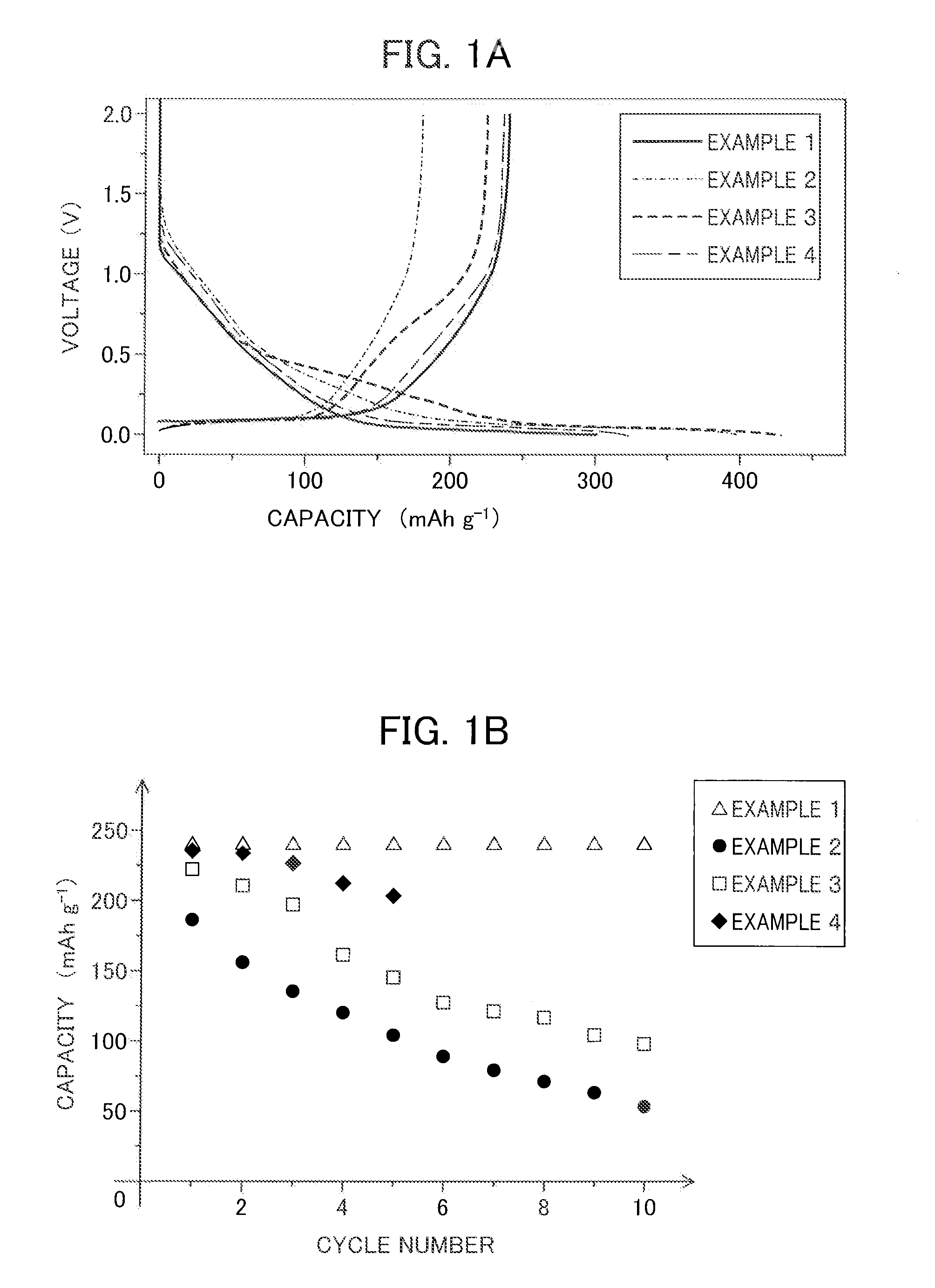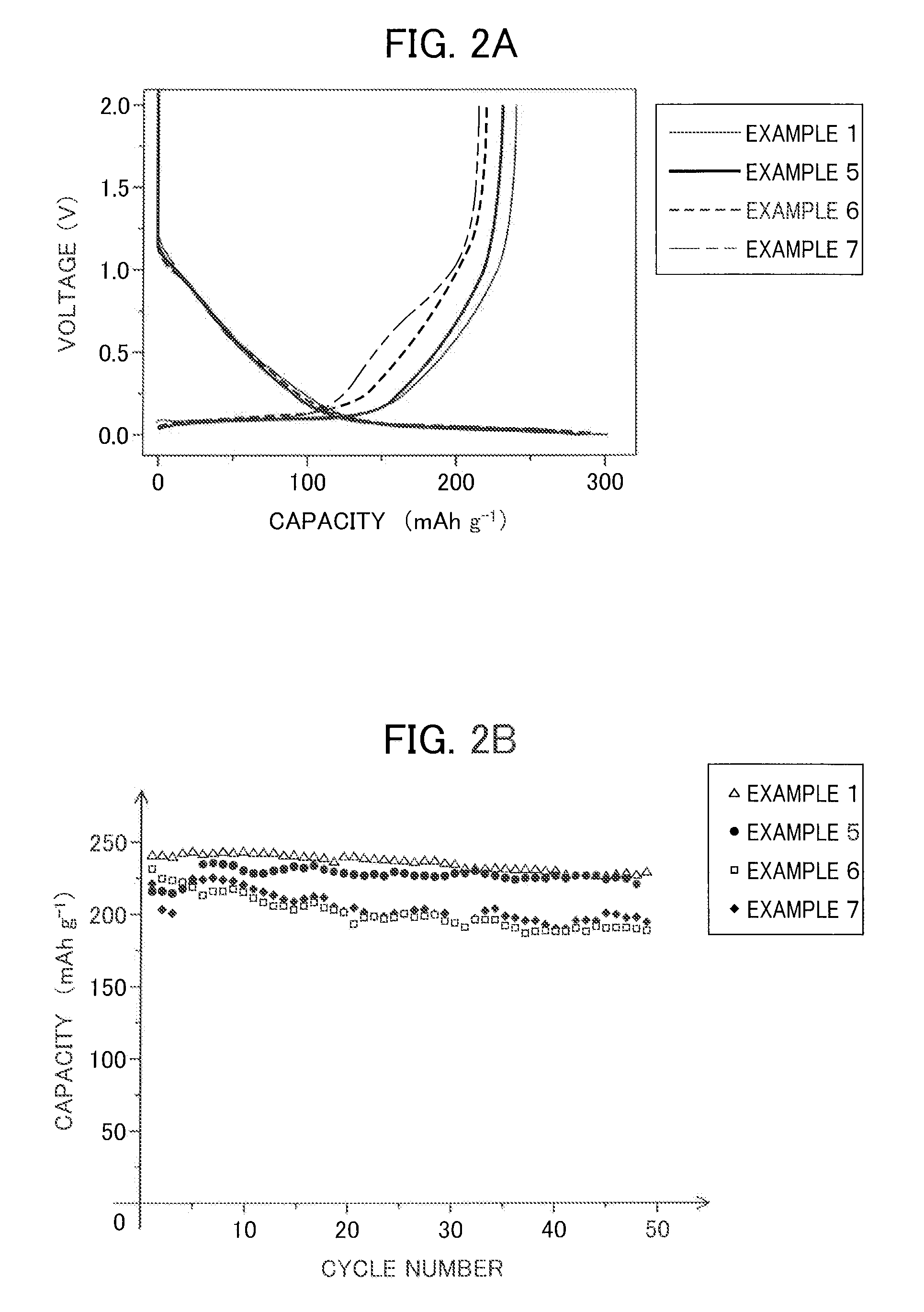Sodium ion secondary battery
a secondary battery and sodium ion technology, applied in the direction of non-aqueous electrolyte cells, cell components, electrical apparatus, etc., can solve the problems of battery performance decline, battery performance decline, and poor conductivity in a direction perpendicular to the laminated direction, and achieve the effect of reducing the battery performance caused by the active material of the anod
- Summary
- Abstract
- Description
- Claims
- Application Information
AI Technical Summary
Benefits of technology
Problems solved by technology
Method used
Image
Examples
example 1
[0073]An anode active material slurry was prepared by adding in the appropriate amount NMP (N-methylpyrrolidone), which is a solvent, to solid contents composed of 90% by mass of hard carbon (“Carbotron P”, made by Kureha Corporation) with an average particle size of 10 μm, which is the anode active material, and 10% by mass of polyvinylidene fluoride, which is the binding agent.
[0074]On the other hand, a nickel mesh was prepared as the current collector for the anode. A film was formed on one surface of the current collector thus prepared by applying the anode active material slurry prepared above by way of the doctor blade method. Next, this coating was made to vacuum dry while at 90° C.
[0075]Then, the manufacture of two-electrode beaker-type and coin-type sodium-ion secondary batteries was carried out. The electrode manufactured using the above-mentioned hard carbon was prepared for the working electrode and sodium metal was prepared for the counter electrode to manufacture the b...
example 2
[0076]A beaker-type sodium-ion secondary battery was manufactured by a similar method as the above-mentioned Example 1, except for dissolving 1 M NaClO4 in a mixed solvent of propylene carbonate and dimethyl carbonate mixed in a 1:1 volume ratio.
example 3
[0077]A beaker-type sodium-ion secondary battery was manufactured by a similar method as the above-mentioned Example 1, except for dissolving 1 M NaClO4 in a mixed solvent of propylene carbonate and ethylmethyl carbonate mixed in a 1:1 volume ratio.
PUM
 Login to View More
Login to View More Abstract
Description
Claims
Application Information
 Login to View More
Login to View More - R&D
- Intellectual Property
- Life Sciences
- Materials
- Tech Scout
- Unparalleled Data Quality
- Higher Quality Content
- 60% Fewer Hallucinations
Browse by: Latest US Patents, China's latest patents, Technical Efficacy Thesaurus, Application Domain, Technology Topic, Popular Technical Reports.
© 2025 PatSnap. All rights reserved.Legal|Privacy policy|Modern Slavery Act Transparency Statement|Sitemap|About US| Contact US: help@patsnap.com



